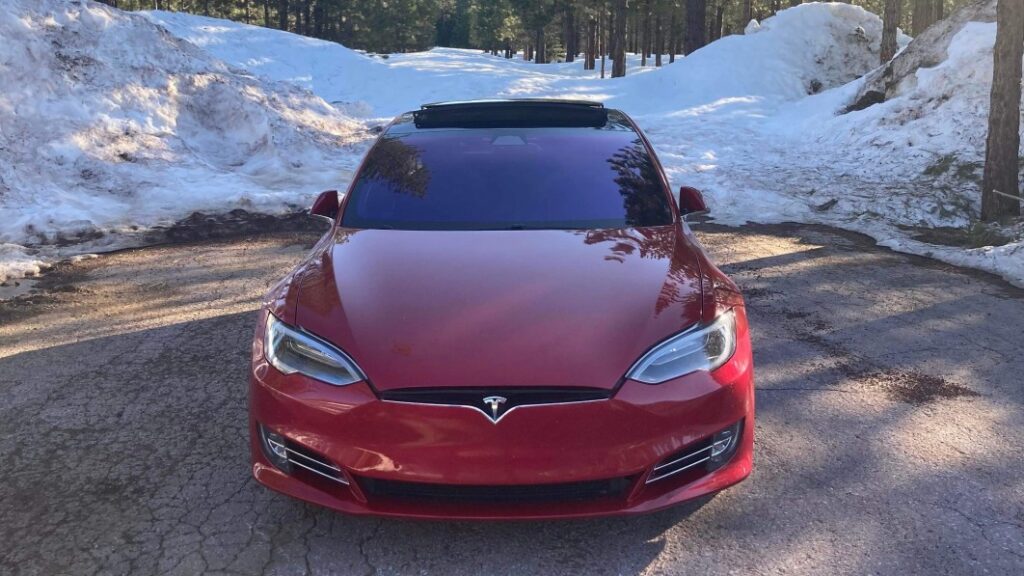A man took his Tesla on a road trip for the first time and tells EV owners to beware of the 'charging curve'

Ryan Shelton’s
2017 Tesla Model S.
Ryan Shelton
Last month, Ryan Shelton took his 2017 Tesla Model S on a road trip for the first time.
He drove almost 1,300 miles, from North Long Beach to Burney Falls in California and back.
He underestimated how much the terrain would affect the battery’s range and has three big takeaways.
Ryan Shelton bought his Tesla a year ago but hadn’t taken it on a road trip until April.
The 27-year-old business owner wanted to see Burney Falls, a 129-foot waterfall in McArthur-Burney Falls Memorial State Park in Shasta County, California.
On April 8, he decided to drive his 2017 Model S with his partner to the waterfall. Fully aware that road tripping with a Tesla would require some planning, Shelton looked at charging points.
The farther from a city, the harder it was to find a Tesla Supercharger. It took them 17 hours to get to Burney Falls, he said, after leaving about 3 p.m. and arriving the next day about 7 a.m.
“I had anxiety, actually,” Shelton told Insider, referring to when he passed by Dunnigan, California, where the last charger before the campground was. The only chargers were within a 75-minute drive in either direction, he said.
Shelton in his Tesla.
Ryan Shelton.
The terrain trap
Shelton’s trip took so long because of the route’s hilly terrain.
“I was going through these canyons, so I’m going really, really high uphills and really up and down, up and down, up and down,” he said. “Because of that, it literally took about 30% of my battery to get to the charger from the campsite.”
Shelton added: “I ended up doing this terrible dance where I was camping and using camp mode on the vehicle.”
Camp mode makes sleeping in the car more comfortable by maintaining temperature and airflow.
“I was running that for about eight hours, and the battery lost 20% of its range,” he said.
The terrain and camp mode forced Shelton to twice charge his Tesla, which took three hours each time.
“Dealing with the terrain and camp mode, I literally couldn’t keep a charge, so I had to keep going to that charger once a day for two days in a row,” Shelton said.
He relied on the buffer of his Tesla’s battery, he said, which allayed some of his concerns when the range was under 50%.

Shelton’s Tesla.
Ryan Shelton
Plan ahead
“The further you get out from the city, the higher the chances that your road-tripping experience is going to go more into the negative, or it’s going to be less pleasant,” Shelton said.
He added that on their way back to North Long Beach, the journey took only 12 hours because chargers were available more often: “I didn’t need to charge the car to 100% because I could get to another charger much more easily.”
Shelton advises electric-vehicle drivers to be aware of the “charging curve.” If you need to ensure your car is 100% full, or you’re worrying about where you’ll next be able to charge, your trip could be longer — and less enjoyable.
Charging is still a bit in its Wild West days
Shelton said he got into a bit of an argument with another driver whom he said had jumped the queue at one Supercharger. “There’s no handbook with this,” he added.
Despite that hiccup, he said, it was a “really fun trip.”
Do you have thoughts about driving long distances in an EV? Reach out to this reporter at stabahriti@insider.com or on Twitter DM.



